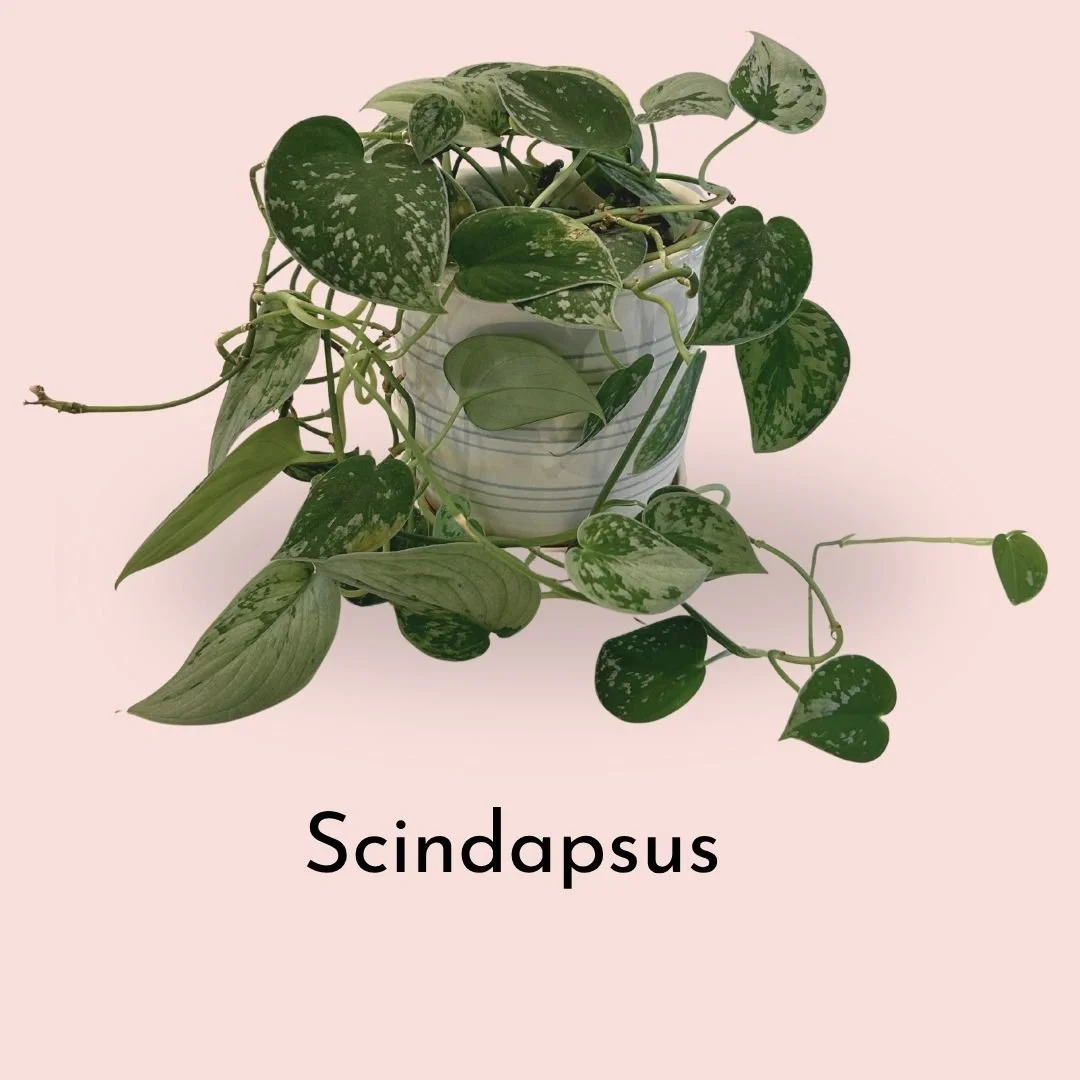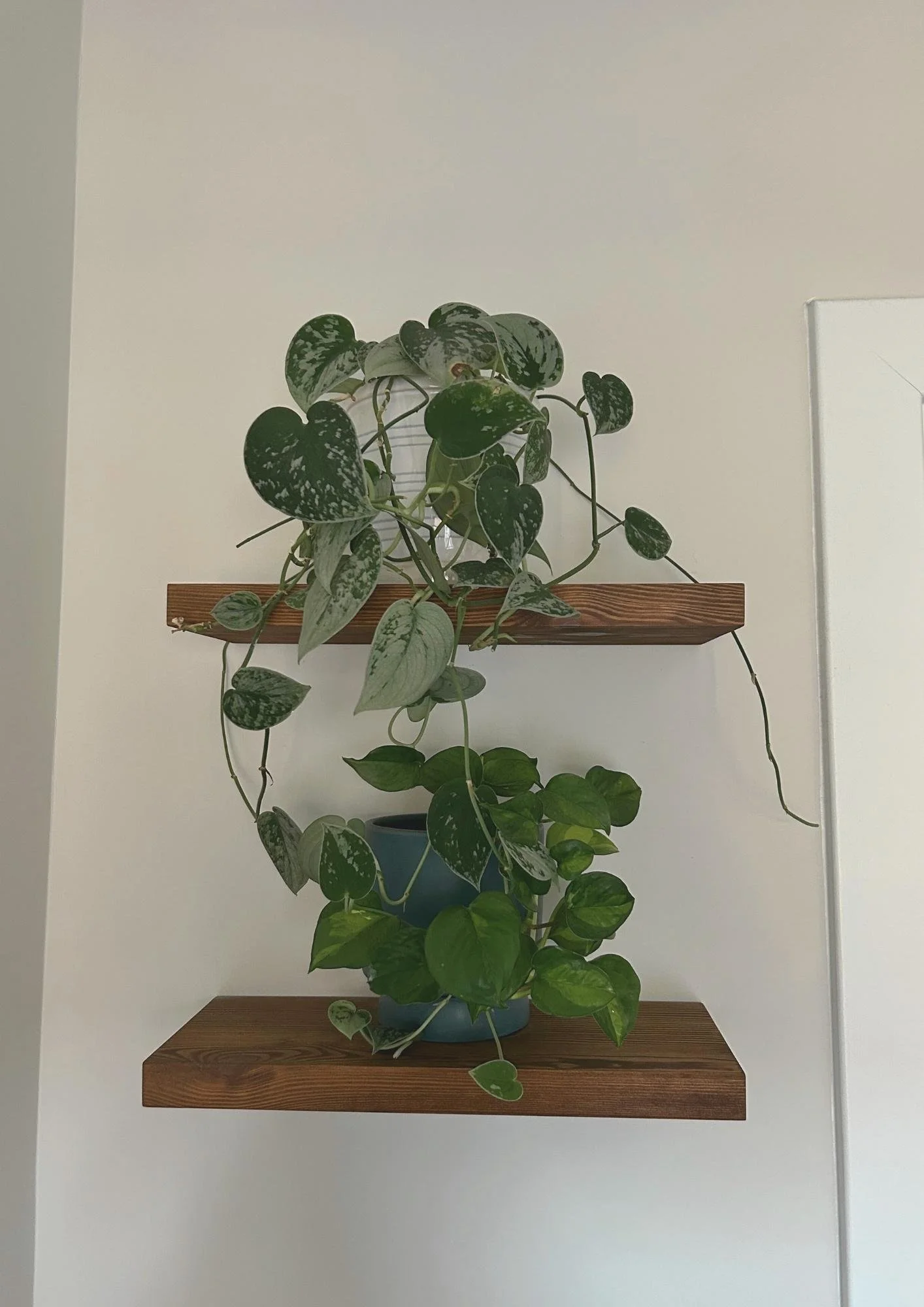10 Best Houseplants for Beginners: Easy Indoor Plants that Thrive
This article contains affiliate links, marked with an asterisk (*). As an Amazon Associate, I earn from qualifying purchases. Please see my policy on affiliate links.
If you've ever watched a plant wither away despite your best efforts, you're not alone. But here's the good news: some houseplants are genuinely hard to kill, and I'm about to share my favorites with you.
I'm obsessed with plants, indoors and out! When I started working in a plant shop, it was like pouring fuel on a fire. Suddenly I had access to every gorgeous plant imaginable, and my collection swelled to over 70 houseplants. Through trial and error (okay, and a few casualties), I quickly learned which plants are the most forgiving and long-lived.
Here's my list of the easiest houseplants I've grown, complete with photos of my very own plants. How do I know exactly how long I've had each one? I keep a notebook* where I record every new plant - with a photo, acquisition date, and care notes. Yes, I'm that person. Told you I was obsessed! 🤓
Throwback! My kangaroo paw fern's journal entry from 2019 when it was just a little guy.
The Basics Before We Begin
These plants are beginner-friendly, but they're not magic. You still need to pay attention to light, watering, and soil requirements. Ignore these basics and even the easiest plants will struggle. Don't worry, though, nothing on this list requires anything complicated.
A few universal tips:
Houseplants do better in pots with drainage holes
For fertilizing (unless noted otherwise), I use Osmocote Plus Smart Release All Purpose Plant Food* for tropical plants or Dynamite Cactus & Succulent Food* for cacti and succulents. These are foolproof slow-release granules that you simply sprinkle on the soil two or three times a year, no messy mixing required! They release a little bit of fertilizer every time you water.
Now, let's dive into the plants! 🪴
1. Scindapsus
Botanical Name: Scindapsus species
Often confused with pothos, scindapsus is a close relative with its own charm. It's commonly called "silver pothos", "satin pothos", or “silver satin pothos” because of its beautiful silvery, reflective leaves. This trailing beauty is incredibly forgiving and tells you exactly when it needs water because the leaves start to curl.
There are gorgeous varieties to choose from, like 'Mount Salak' with silver-speckled green leaves and 'Platinum Java' with silvery-green foliage. My plant (pictured) is the classic silver pothos variety and it's been thriving for 6 years. It looks a bit small in the photo because when it was time to repot, I divided it into two plants. It's still filling in, but that's the beauty of this plant - it keeps on giving!
You can let it trail from a shelf or train it to climb. Either way, it's low-fuss and rewarding.
Water: When top 2-3 inches of soil is dry
Light: Bright, indirect light
Soil: 90% tropical potting mix and 10% perlite
Pet safe: No
2. Kangaroo Paw Fern
Botanical Name: Microsorum diversifolium
Okay, maybe you've been burned by ferns before. You brought home a lush, gorgeous fern only to watch it crisp and turn brown within days (I’m looking at you, maidenhair fern 👀). I feel your pain.
But this fern is different. The kangaroo paw fern is adaptable and easy to grow. It has dark, glossy green leaves that resemble kangaroo paws, and as it matures, it develops unique fuzzy rhizomes that creep over the pot's edges.
This plant likes moisture, so I water mine once a week at the sink, giving it a deep watering until water runs out from the hole in the bottom. It'll tell you when it needs water by wilting slightly. One important note: water the soil directly and don't spray the leaves, or you'll get brown spots - kangaroo paw ferns don’t like wet foliage.
My plant (pictured) is almost 6 years old. It started as a tiny 4-inch plant and now lives in a 10-inch bowl-shaped planter after several repottings. Perched on top of my refrigerator, it brings a cheerful pop of green to my kitchen.
Water: When top 1 inch of soil is dry
Light: Bright, indirect light
Soil: Tropical potting mix
Pet safe: Yes
3. Staghorn Fern
Botanical Name: Platycerium bifurcatum
You might be surprised to see this one on a list of easy houseplants. Staghorn ferns are epiphytes - plants that naturally grow on other plants or surfaces rather than in soil, like orchids or air plants. You've probably seen them mounted on wood plaques covered in moss, and many websites insist that mounting is necessary for the plant's longevity.
Well, I'm here to tell you that's not true. Mounting looks super cool, but it's high maintenance and requires frequent soaking. My staghorn fern (pictured) has been perfectly happy in a regular pot for 7 years. I've kept it in the same plastic nursery pot dropped into a decorative container, and it keeps growing its heart out with lush, beautiful fronds.
My routine? Water it once a week, making sure to wet both the root ball and the shield fronds (those flat, papery leaves at the base). I also spray it twice a month with The Grow Co. orchid food mist*. And that's it!
One caution: keep it out of direct sunlight. See that brown spot on mine? The sun angle changed in fall, hit my plant directly, and I didn't move it fast enough. Lesson learned!
Water: Once a week spring through fall, once every two weeks in winter; make sure both the root ball and shield fronds get wet
Light: Extremely bright, indirect light
Soil: 50% cactus potting mix and 50% orchid bark
Pet safe: Yes
4. Snake Plant (Mother-in-Law's Tongue)
Botanical Name: Dracaena trifasciata, formerly Sansaveria trifasciata
Snake plants are the ultimate low-maintenance houseplant. They're architectural, stylish, and so adaptable you can find a spot for them almost anywhere. Sun or shade, they'll handle it! 🌞😎
There are tons of fun varieties to choose from: the popular tall, spiky 'Laurentii,' the small, curly 'Twisted Sister,' the silvery-green 'Futura Robusta,' and the starfish-like 'Boncel', just to name a few. Mine (pictured) is the 'Moonshine' variety, and I've had it for over 5 years.
I water it every 3-4 weeks and keep it in bright light, which brings out its beautiful silvery coloring. Once a year in spring, I take it to the sink for a good dousing until water runs out the bottom, and I rinse off all the leaves. That's my entire care routine!
Water: When top 3-4 inches of soil is dry
Light: Bright, indirect light to shade (note: leaf colors and patterns may dull in shade)
Soil: Cactus potting mix
Pet safe: No
5. Jade Plant
Botanical Name: Crassula ovata
My jade plant is the crown jewel of my plant collection. It belonged to my mother, and it's over 30 years old! The stems have grown thick and woody, making it look more tree-like as it ages.
Jade plants love sun - the more, the better. I've seen many websites claim jade plants don't like direct sun, but this is simply not true. They grow wild on sandy slopes and open rocky areas in South Africa where the sun beats down on them all day. Indoors, they can handle anywhere from bright indirect light to full sun.
Don't worry about "scorching" or "sunburning" them. If the leaves develop a red or purple tinge on the edges, it's just a normal response to sunlight and it's quite beautiful. My plant gets 3-4 hours of direct sun on its leaves and bright indirect sun the rest of the day.
I water it every 2-3 weeks, and once a year it gets a bath in the sink where I spray dust off the leaves. One thing I've noticed: every year in late winter to early spring, it does a bit of "self-pruning" where a few lower leaves wrinkle and fall off. Nothing to worry about, it's completely normal.
I've taken cuttings for my children, and they have their own beautiful plants now. This plant has become a treasured family heirloom.
Water: When top 2-3 inches of soil is dry
Light: Full direct sun to bright indirect light
Soil: Cactus potting mix
Pet safe: No
6. Prickly Pear Cactus
Botanical Name: Opuntia species
This plant is so easy to care for, it stands out even on a list of easy plants! Find the sunniest spot possible, let the soil completely dry out between waterings, and you're golden.
Just make sure it's not in a high-traffic area where people or pets might brush against it - nobody wants cactus spines in their skin! There are fun varieties to choose from, like 'Joseph's Coat' with an interesting growth habit and subtle variegated coloring, or ‘Cowboy’ with it’s wide, flat pads.
My plant (pictured) is 6 years old, and I combined two types of ‘Bunny Ears’ prickly pear in one pot to create a more dynamic look: one has red spines and the other has white (I used this blue pot from Amazon*).
Water: When top 3-4 inches of soil is dry
Light: Full direct sun to bright indirect light
Soil: Cactus potting mix
Pet safe: Non-toxic, however spines may cause injuries to eyes, ears, and skin
7. Pothos (Devil's Ivy)
Botanical Name: Epipremnum aureum
I'm sure pothos is already on your radar, it's the most popular beginner houseplant for good reason! This easygoing vining tropical plant thrives in bright, indirect light with high humidity, but here's the magic: it's extremely forgiving when conditions aren't perfect.
Low humidity? Forgot to water? Too much shade? Pothos handles it all like a champ. It's perfect for offices, dark corners, and absolute beginners.
There are so many fun varieties with different leaf patterns: 'Lemon Meringue' has lemony-green splotches, 'Neon' has bright chartreuse leaves, 'Pearls and Jade®' has white and cream streaks on green. I could go on and on - the options are endless!
Pothos is a plant stylist's dream. You can place it on a shelf to let the vines cascade down, or train it up a bendable moss pole*, or train it around windows and doorways using clear hooks*. It even tells you when it needs water - the leaves will curl under and wilt.
My plant (pictured above) is 'Global Green', and I've had it for 4 years. I keep it on a high shelf (safely out of my cat's reach!) in a bright, sunny spot, and water it every 2 weeks.
Water: When the top 2 inches of soil is dry
Light: Bright, indirect light; tolerant of medium to low light, but leaf patterns and colors may dull with more shade
Soil: 90% tropical potting mix and 10% perlite
Pet safe: No
Pothos and scindapsus living their best lives on cat-proof shelves.
8. Burro's Tail
Botanical Name: Sedum morganianum
Burro's tail is perfect for beginners who want something a little different. This cool-looking succulent features plump, fleshy leaves in blue-green to yellow-green hues arranged along cascading stems.
It needs lots of sun or bright light, a little water every 2-3 weeks, and that's it. One quirk: the leaves fall off easily when the plant is brushed or moved, so find a sunny spot in a low-traffic area and just let it be.
Mine sits on a sunny windowsill and I almost never move it. Every 3 weeks I give it some water - just enough to reach all the roots. In the photo, you can see I've planted it in a Buddha head planter* along with another low-maintenance succulent called 'Baby Necklace' crassula. Both plants were tiny starts in 2-inch pots when I planted them 3 years ago, so you can see how much they've grown!
Water: When the top 3-4 inches of soil is dry
Light: Full direct sun to bright indirect light
Soil: Cactus potting mix
Pet safe: Yes
Burro's tail and Baby Necklace crassula soaking up sun on the windowsill behind my couch, keeping company with my elephant cactus and carnivorous plants.
9. Holiday Cactus
Thanksgiving cactus (Schlumbergera truncata), Christmas cactus (Schlumbergera x buckleyi), Easter cactus (Rhipsalidopsis gaertneri)
When I say "holiday cactus," I'm actually referring to three different plants: Thanksgiving cactus, Christmas cactus, and Easter cactus. All three are slightly different botanically, but all are easy to grow and known for flowering around their corresponding holiday.
They're attractive year-round, even when not flowering, and you can find varieties with flowers in different colors. Don't be fooled by the "cactus" name, though. These are tropical plants that like moisture, not desert conditions!
Place it in bright indirect light and keep the soil moist but not soggy - I water mine once a week. These plants are also extremely long-lived and can survive 100 years or more when cared for properly. I have two plants from my mother-in-law, so they're wonderful to pass down through families.
My plant (pictured above) is a 7-year-old Thanksgiving cactus. I took two 4-inch plants that flower in different colors (fuchsia pink and yellow) and potted them together for a multi-hued display. It's one of my favorite plants! It sits happily on the dining room table and produces flowers every year with little intervention from me.
Water: When the top 1-2 inches of soil is dry
Light: Bright indirect light
Soil: Tropical potting mix
Pet safe: Yes
My Easter cactus showing off its beautiful shell pink blooms.
10. Elephant Cactus
Botanical Name: Pachycereus pringlei
This long, tall cactus is known as the tallest cactus species in the world. Don't worry, though, because growing it in a pot keeps it manageable! The long, tubular shape provides great contrast when combined with other cacti and succulents.
This is another plant to keep in an out-of-the-way spot because of its spines. I have mine on a sunny windowsill where it gets full direct sun, though it can also tolerate a half day of sun. It grows slowly - mine is 10 years old and has only grown a couple of inches in that time.
I water it every 3-4 weeks, and that's it! I love how it adds variety and texture to my windowsill plant arrangement.
Can't find elephant cactus? There are numerous other cactus varieties that grow well indoors with the same care requirements: old man cactus, star cactus, fairy castle cactus, and brain cactus, to name a few.
Water: When the top 3-4 inches of soil is dry
Light: Full direct sun to bright indirect light
Soil: Cactus potting mix
Pet safe: Non-toxic, however spines may cause injuries to eyes, ears, and skin
Your Journey to Plant Parenthood Starts Here
These ten plants have been my most reliable companions over the years. They've survived my busy weeks, my learning curve, and even occasional neglect. If you're new to houseplants or recovering from past plant failures, any of these would make an excellent starting point.
Remember, even easy plants need the right conditions to thrive. Pay attention to their light, water, and soil needs, and they'll reward you with years of growth and beauty. Before you know it, you might find yourself with 70+ plants and a notebook full of plant dates, just like me! 😉
Be sure to check out our Easy Indoor Plants Care Guide for more tips to make your life easier and keep your plants healthy. 🪴
Frequently Asked Questions
What is the easiest houseplant for absolute beginners?
Snake plants and pothos are tied for the easiest. Both tolerate neglect, varying light conditions, and infrequent watering. You really can't go wrong with either one.
Can these plants survive in low light?
Some can tolerate lower light better than others. Pothos and snake plants handle low light best, though their colors may dull. Cacti and succulents (jade plant, prickly pear, burro's tail, elephant cactus) need bright light to thrive.
How often should I water my houseplants?
It depends on the plant and your indoor environment! Most of these plants prefer to dry out between waterings. The best rule: stick your finger in the soil to check moisture levels before watering. Each plant listing above includes specific watering guidance.
Are any of these plants safe for pets?
Yes! The kangaroo paw fern, staghorn fern, burro's tail, and holiday cactus are all pet-safe. However, many popular houseplants (including pothos, scindapsus, snake plant, and jade plant) are toxic to pets if ingested. Check out our articles House Plants Toxic to Cats and Common Plants Toxic to Dogs to learn more.
What's the difference between pothos and scindapsus?
While closely related and often confused, they're different plants. Scindapsus (sometimes called satin pothos, silver pothos, or silver satin pothos) has thicker, more textured leaves with a silvery sheen, while true pothos has thinner, glossy leaves. Both are easy to grow!
Follow Plant and Bloom Design for More Ideas















